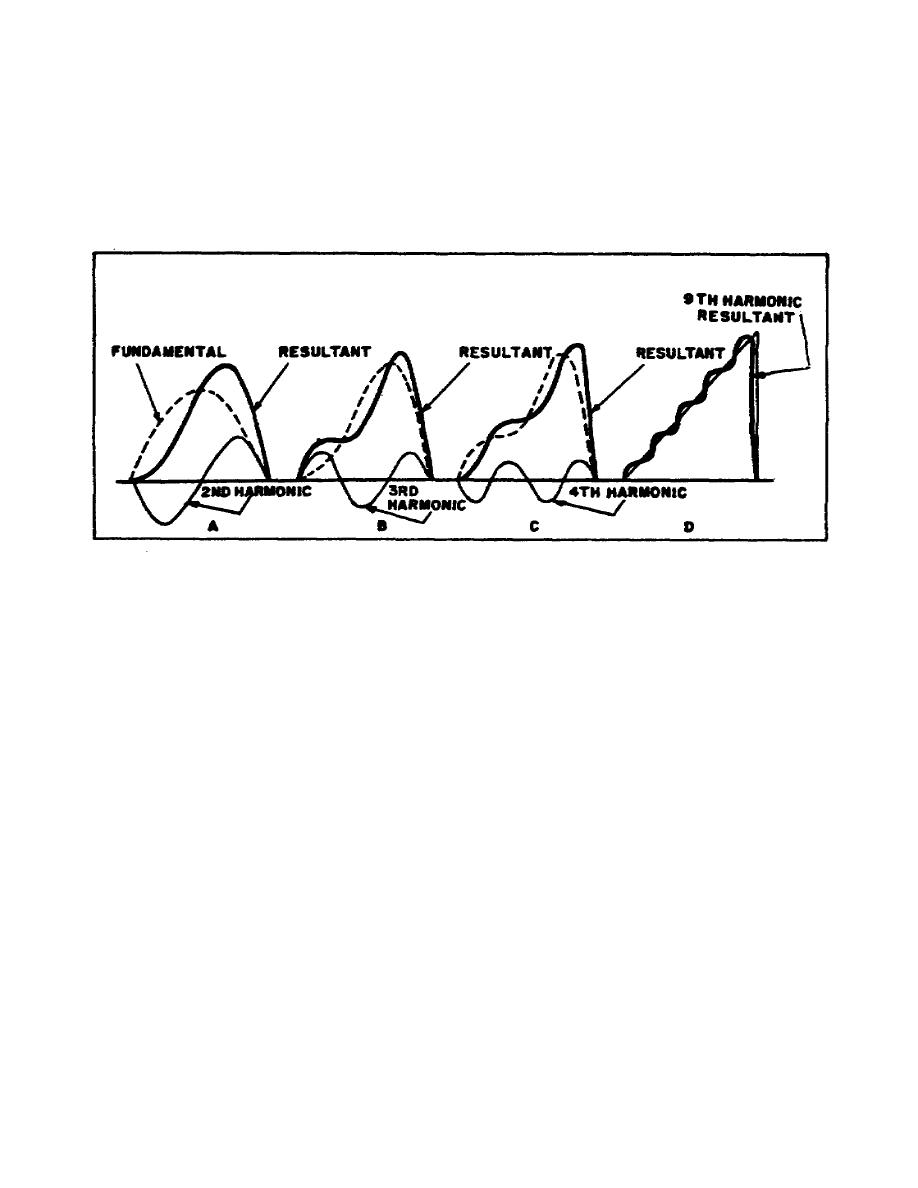
it can be seen that the even and odd harmonics are added with
opposite phase relationships. As each harmonic is added, the
resultant wave more closely resembles the sawtooth voltage. This is
illustrated by the addition of the fourth harmonic in Figure 4C, and
up to the ninth harmonic in Figure 4D. Triangular waves can be
constructed similarly by adding a series of sine waves in proper
phase and amplitude to the fundamental frequency.
Figure 4. Sawtooth wave composition
Section IV. BANDWIDTH
6.
EFFECTS OF BANDWIDTH ON NONSINUSOIDAL WAVEFORMS.
a. Bandwidth represents the range of frequencies that a circuit
will pass. When a nonsinusoidal wave is applied to a circuit, the
number of harmonics that appear at the output depends upon the
bandwidth of the circuit. Consider the effect of a circuit with a 3
kHz (3000 kHz) bandwidth (from 0 Hz to 3 kHz) on a square wave having
a pulse repetition frequency (prf) of 1 kHz. Since the circuit will
pass only frequencies up to 3 kHz, only the fundamental frequency (1
kHz) and the third harmonic (3 kHz) will appear in the output (Figure
5A). Although a square wave is applied at the input, the output
increased to 7 kHz (from 0 Hz to 7 kHz), all of the harmonics up to
and including the seventh will be passed (Figure 5B), and the output
increased, more harmonics are passed and the output waveform more
closely resembles the input waveform.
8


 Previous Page
Previous Page
